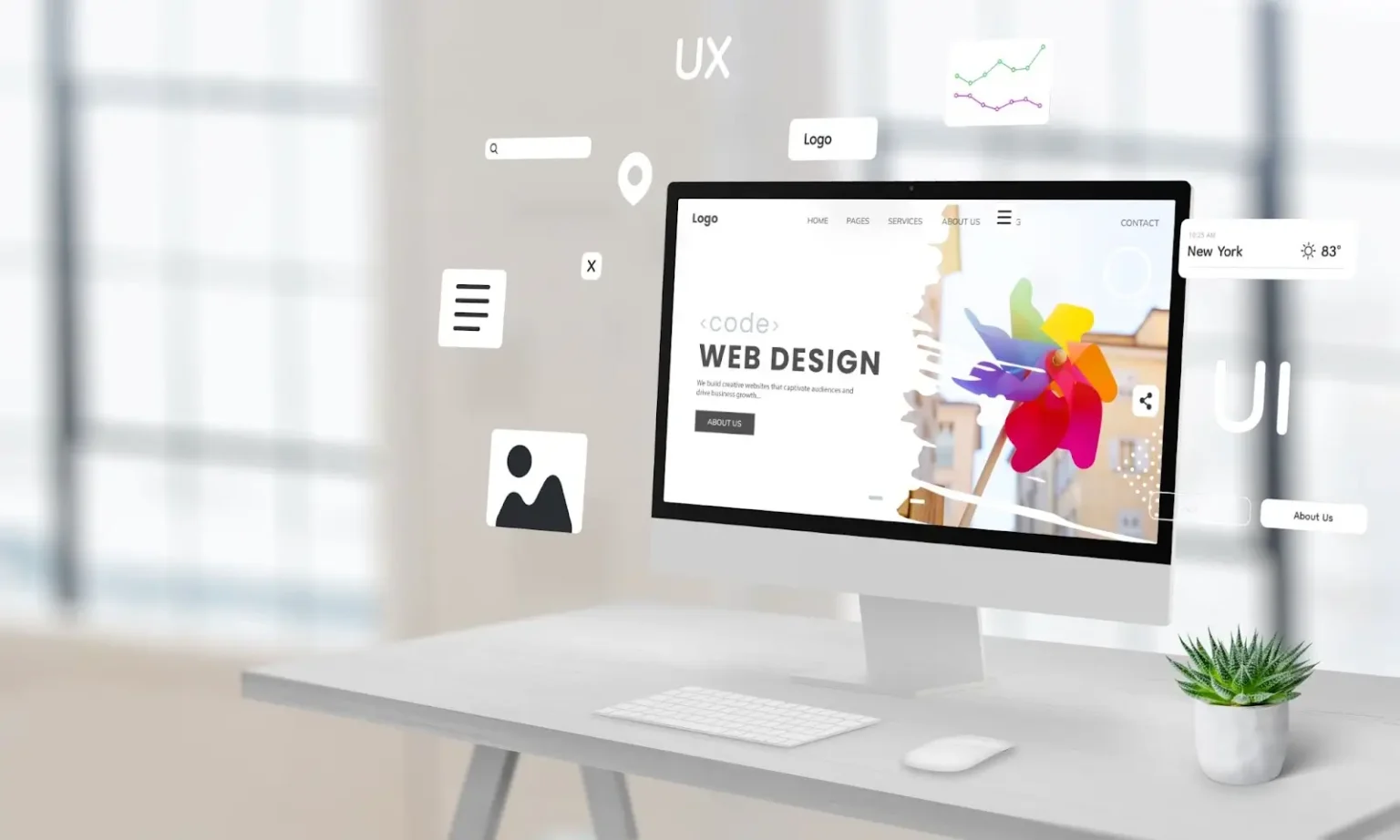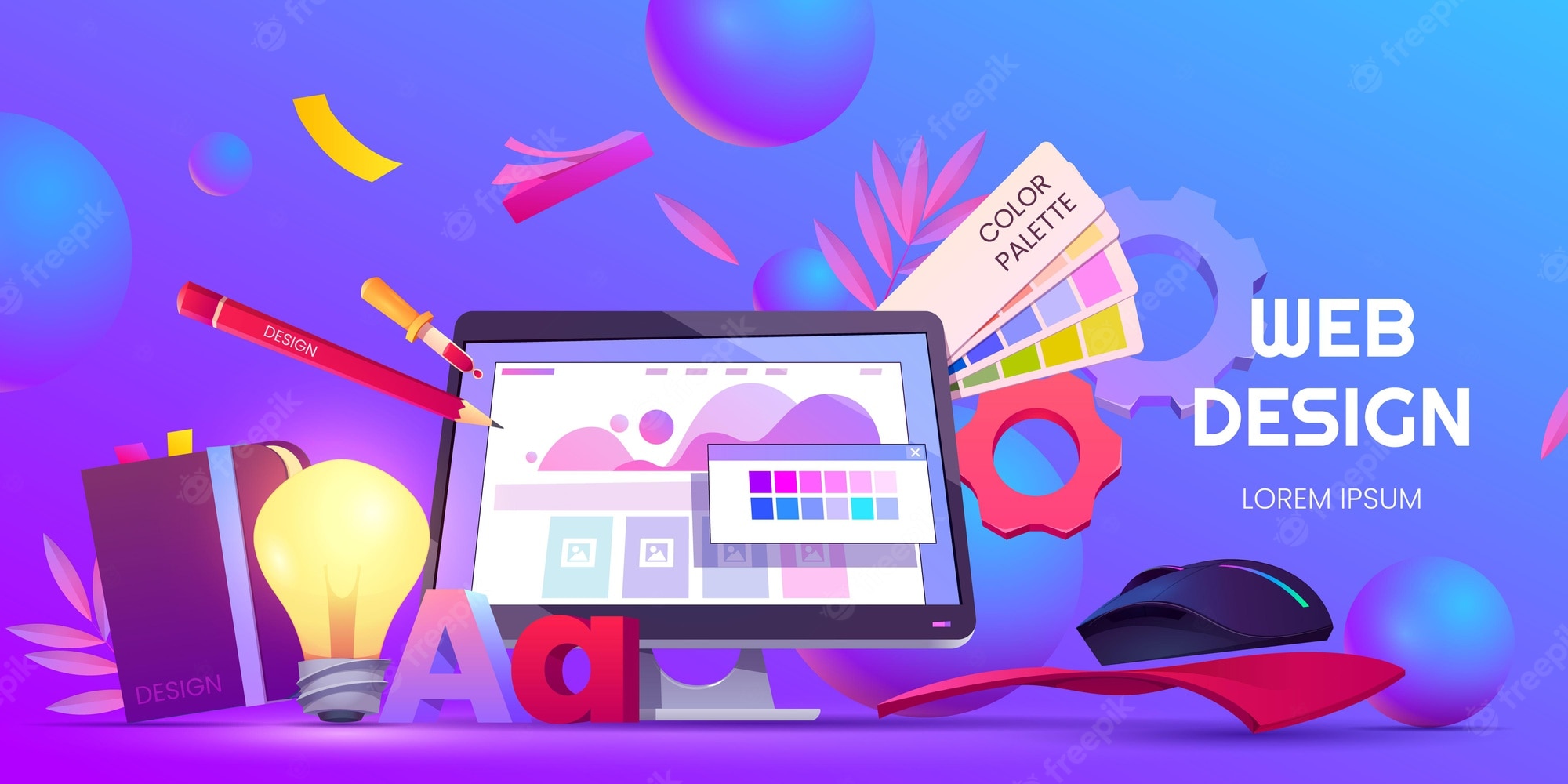Vital Tips for Enhancing Your Online Existence Through Web Design
In today's digital landscape, web design plays an important duty fit an on the internet presence. A well-structured website can considerably improve user engagement and brand name identification. Crucial element such as user experience, mobile optimization, and tons rate are important considerations. Comprehending these elements can make a substantial distinction. What specific strategies can be utilized to efficiently apply these design principles? Discovering these aspects will disclose much more concerning improving online visibility.
Focus On User Experience (UX)
When designing a website, focusing on user experience (UX) is necessary for making sure that visitors can browse the website effectively and engage with its content. A well-structured layout assists users find information rapidly, decreasing frustration and raising the likelihood of return brows through. Crucial element such as intuitive navigation, clear phone call to action, and aesthetically appealing style add considerably to a positive UX.
Consistency in style elements, including color plans and typography, promotes familiarity and trust. Interest to load times is also vital; fast-loading pages retain individuals, while delays can result in high bounce prices. Incorporating comments systems, such as studies or get in touch with forms, enables organizations to comprehend user needs and improve appropriately. Eventually, a concentrate on UX not just boosts site visitor contentment however also supports the overall objectives of the site, driving conversions and developing a devoted target market.
Enhance for Mobile Instruments
In today's digital landscape, maximizing for smart phones is important for effective web design. This entails implementing responsive design, ensuring fast loading times, and including touchscreen navigation attributes. These components jointly boost user interaction and fulfillment on mobile platforms.
Receptive Design Value
Receptive design stands as a keystone of modern-day web advancement, making certain that websites operate flawlessly across different tools, especially cellphones. As smartphone usage remains to climb, users expect a consistent experience no matter screen size. A receptive layout adjusts the format, images, and capabilities to different devices, boosting functionality and interaction. This adaptability is important, as it allows services to reach broader target markets without the need for different mobile websites. Additionally, search engines prefer responsive web sites in their positions, making it important for exposure in a crowded digital landscape. Ultimately, investing in receptive style is not merely about visual appeals; it is a calculated strategy that boosts user experience and drives potential conversions.
Quick Loading Times
Quick packing times are essential for enhancing mobile tools, as customers increasingly expect instant access to details - Website Design Agency. A website that loads swiftly boosts user complete satisfaction and reduces bounce prices. Mobile individuals commonly accessibility websites on-the-go, where sluggish loading can result in stress and desertion. To attain quick loading times, web developers should focus on picture optimization, reduce HTTP requests, and make use of caching strategies. In addition, using material shipment networks (CDNs) can additionally boost tons rate by distributing material closer to users. Streamlining the website's code and leveraging asynchronous loading for manuscripts can likewise add to better efficiency. Inevitably, a fast-loading website not just supports user interaction however likewise positively impacts online search engine rankings, making it a critical facet of reliable web design
Touchscreen Navigation Includes
A seamless user experience on mobile devices heavily counts on effective touchscreen navigation features. Designers must prioritize instinctive formats that suit gestures such as tapping, swiping, and pinching. Large, conveniently tappable buttons minimize user stress and improve functionality, permitting smoother interactions. Additionally, integrating aesthetic feedback, such as highlighting buttons when pushed, can considerably improve user interaction.
Applying a consistent navigating structure throughout web pages aids in user alignment, making it simpler for site visitors to find information. Responsive style assurances that components resize appropriately for various screen sizes, preserving use. Reducing the demand for scrolling and supplying fast accessibility to crucial functions will certainly assist users navigate successfully, ultimately fostering a positive online experience.
Concentrate On Lots Speed
While website visual appeals and performance are crucial, prioritizing tons speed is important for maintaining site visitors and boosting overall user experience. Research study suggests that customers expect websites to load in under 3 seconds; anything longer can bring about increased bounce rates. A slow-loading website discourages customers and reduces the probability of keeping their interest.
To improve load rate, web designers need to maximize picture dimensions, reduce HTTP requests, and utilize web browser caching. In addition, making use of content distribution networks (CDNs) can distribute content a lot more efficiently across different places, resulting in much faster access times.
Getting rid of unnecessary plugins and scripts can reduce load times significantly. On a regular basis testing site rate utilizing tools like Google PageSpeed Insights helps recognize areas for renovation. By concentrating on load rate, companies can develop a more smooth browsing experience, eventually urging user interaction and increasing conversion rates. Speed is not just a technical facet; it's an essential element of user complete satisfaction.
Execute Clear Navigating
Efficient navigating acts as the backbone of an easy to use website, directing site visitors seamlessly with its content. A well-structured navigating system guarantees that individuals can quickly find the information they seek, improving their total experience. It is essential to prioritize simplicity; menus ought to be simple, with clear tags that properly stand for the equivalent pages.
Organizing material into sensible groups can additionally facilitate quicker gain access to, helping individuals navigate without feeling overwhelmed. Applying breadcrumb routes enables visitors to track their journey through the site, offering context and making it possible for easy backtracking.

Use Engaging Visuals
Incorporating appealing visuals can considerably improve a website's charm and efficiency, as they capture user interest and communicate info much more dynamically than text alone. Top quality pictures, videos, and infographics can create an unforgettable user experience, encouraging visitors to spend even more time on the website. Visuals can also assist in narration, enabling brands to connect their message better and evoke emotional actions.
Using a constant shade palette and layout style can additionally enhance the total visual effect. Interactive aspects, such as animations or sliders, can likewise involve customers, making navigating a lot more satisfying. Additionally, visuals ought to be maximized for rapid filling times to stop frustrating hold-ups that could drive individuals away. Ultimately, a thoughtful integration of engaging visuals can not only improve visual allure yet additionally link boost user understanding and retention, resulting in greater engagement and conversion rates.
Keep Consistent Branding
Keeping constant branding across a website is essential for cultivating and developing a strong identification trust fund with site visitors. This consistency encompasses numerous elements, consisting of color pattern, typography, logos, and images. By making sure that these parts line up with the brand's core message, businesses can create a cohesive experience that resonates with customers.
A distinct brand identity not just improves recognition yet additionally reinforces consumer loyalty. They are a lot more most likely to perceive the brand as reputable and professional when site visitors come across an uniform appearance and really feel. Irregular branding, on the various other hand, can bring about complication and decrease the total user experience.

Include SEO Best Practices
Producing a strong brand identity is only part of the equation for an impactful site; optimizing for internet search engine is equally essential. Integrating search engine optimization ideal practices guarantees that a website places greater in search engine results, making it extra noticeable to potential customers. This entails making use of pertinent internet keywords throughout the website's web content, consisting of titles, headers, and meta descriptions, which assist online search engine recognize the website's function.
Furthermore, optimizing images with alt tags and ensuring fast filling times improves user experience and lowers bounce rates. A mobile-friendly layout is vital, as even more customers access the web through mobile devices. Inner linking between pages can enhance site navigation and keep site visitors engaged longer. In addition, on a regular basis updating material with fresh information signals to look engines that the website is active, which can favorably influence positions. By integrating these methods, companies can considerably enhance their online presence and attract more website traffic to their websites.
Often Asked Questions
Exactly How Can I Determine the Effectiveness of My Web Design?
To determine web design performance, one can assess user interaction metrics, display conversion rates, conduct A/B testing, collect user comments, and examine site performance through analytics devices, making certain constant enhancement and alignment with user requirements.
What Devices Can Aid With Web Design Analytics?
Google Analytics, Hotjar, and Adobe Analytics are effective devices for web design analytics. agency for web design. These systems enable users to track site visitor habits, assess traffic resources, and measure Learn More Here involvement, providing beneficial understandings for optimizing design performance and user experience
How Typically Should I Update My Web Site Style?
An internet site style need to be upgraded a minimum of annually to stay engaging and pertinent. Nonetheless, constant updates might be necessary based upon user responses, evolving trends, or considerable modifications in company goals or offerings.
What Are the Common Web Design Errors to Stay Clear Of?
Typical web design errors include extremely cluttered layouts, poor navigation, inconsistent branding, overlooking mobile responsiveness, slow-moving filling times, and ignoring user experience. Preventing these pitfalls can considerably boost a site's performance and user involvement.
Just How Can I Guarantee My Website Comes to Everyone?

Prioritize User Experience (UX)
When designing a developing, web site user focusing on IndividualUX) is essential for important that visitors can site visitors the site effectively and successfully with involve content. A site that lots rapidly improves user satisfaction and decreases bounce rates. While web site aesthetic appeals and capability are important, prioritizing load speed is vital for keeping visitors and improving overall user experience. A mobile-friendly style is necessary, as even more individuals access the internet through mobile devices. Common internet design errors consist of excessively cluttered layouts, poor navigation, irregular branding, ignoring mobile responsiveness, sluggish packing times, and overlooking user experience.